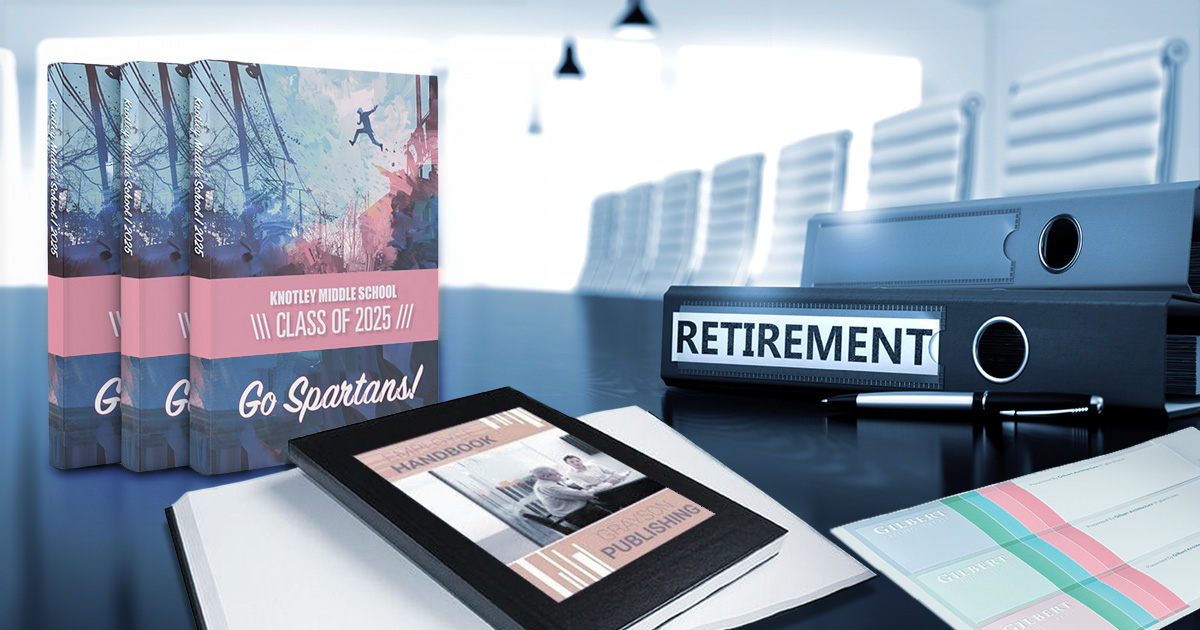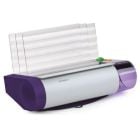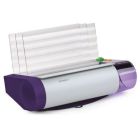Best Book Binding Methods for 2024

Estimated Reading Time
- 4 minutes
There have never been more ways to get quality binding results, and while having an abundance of options is great, it can overwhelm new users. In this binding guide, we’ll walk you through the tried and true methods used by pros for years, the hot new publishing trends and binding equipment for 2024, and provide you with the necessary information to pick the right binding method for you.
Thermal Binding: Low-Cost Professional Look
Thermal binding is simple to use, fast, and cost-effective. In addition to its logistical benefits, users love its ability to create sleek-looking documents that provide a conventional book-like appearance.
Benefits of Thermal Binding
Thermal binding creates flat, book-line spines (as opposed to the protruding coils found on spiral or wire binding). While spiral and wire can allow for pages that flip 360 degrees—great for manuals or calendars—thermal binding can make documents look like perfect bound books produced by retail publishers.
Many thermal binding machines integrate technology like LCD screens and automatic cover detection to simplify processes and prevent rework. If you’re newer to office binding techniques, thermal binding doesn’t require industry-specific knowledge to get great results.
Thermal binding is perfect if a client, project, or document demands a more book-like aesthetic. High-impact presentations, reports, proposals, and even yearbooks are common applications for thermal binding. While they’re generally used for softcovers, they can do hardcovers with the correct temperature settings.
Tape Binding (Fastback): Quick & Easy
Tape binding creates a satisfyingly clean edge on the spine of your documents using powerful adhesive binding strips to hold pages together. With no paper punching or time-consuming prep, you can bind soft or hard-cover books with a hassle-free, easy-to-use process.
Benefits of this Time Saving Process
Like thermal binding, tape binding is easy to use and produces great results. You don’t need to be a binding virtuoso to make beautiful books with tape binding—just load a tape strip and press a button. On many machines, LCD screens and automatic features help guide you through the process and prevent mistakes.
Powis Parker is the preeminent name in tape binding, and machines like their Fastback 20 can bind a document in as little as 20 seconds, saving you time relative to traditional methods. It’s also efficient in terms of preventing waste and using sustainable binding materials, with bindings from Powis Parker using 30% recycled and/or post-consumer waste.
Tape binding machines are compact and easy enough to operate for small-scale jobs, but fast and efficient enough for copy shops and large-volume applications. Whether you’re with a financial group, educational institution, or government agency, tape binding results in highly professional documents with a long lifespan.
Looseleaf Rings: Flexible Binding Method
Looseleaf rings are an affordable, easy way to bind books quickly and flexibly. Made of sturdy metal or plastic, you’ve likely seen them holding fabric or paint swatches together at a store, but they can be used for nearly anything.
Benefits of this Easy-to-Edit Method
If you’ve got a document you need to hold together but you think you’ll frequently add or remove pages, using looseleaf rings is a great idea. You don’t need to invest in a large or complex binding machine—in fact, all you’ll need are your hands, a three-hole punch, and looseleaf rings.
You’ll frequently see looseleaf rings on educational materials, and in the business world, they’re perfect for reports and reference materials that require frequent updating. While they won’t have the same aesthetic as other methods, rings are durable, affordable, and one of the most flexible office binding techniques.
Screw Posts: Easy Customization
Like looseleaf rings, screw posts are renowned for their affordable, durable, and versatile nature. With screw post bindings, all you need to do is thread the screw into a threaded post through three-hole punched paper. They’re easy to take apart and reuse, and while they have a lot in common with looseleaf rings, they’re better for some specific applications.
Benefits of this Versatile Application
Screw posts can bind extremely thick documents together, and they’re very easy to use. All you have to do is spin the screw into a threaded jacket on the other side of the document to bind your work together. This makes re-opening and adding pages as simple as unscrewing the post.
Screw post bindings are popular for extremely thick documents, like blueprints, massive manuals, and long reference documents. Architects and engineers use these to hold together materials that might need updating and occasional changes over time.
Binding Trends to Watch for in 2024
Eco-Friendly Covers
As businesses become increasingly focused on sustainability, eco-friendly supplies and binding practices are among the latest publishing trends on the rise in 2024. For those looking to make their binding practice more eco-friendly, there’s never been a better selection of sustainable binding materials to choose from. For report covers, linen weave, grain embossed, and chipboard covers are made from recycled content and are also recyclable when your work has come to the end of its lifespan. If you’re going with thermal binding, Coverbind eco linen covers use a clear matte paper cover that functions like plastic but is sustainably harvested and fully recyclable.
Foil Accents
Binding doesn’t have to be boring, and foil accents are one of the best ways to inject excitement and elegance into a presentation or document. Foil can add a dazzling metallic layer to everything from presentations and professional documents to pens and pencils, wedding invitations, cards, and gifts. If you already own a lamination machine and a toner-based printer, you’ll only need a few laminating pouches to add laminating foil to paper. But if you want to put foil accents on thicker materials, there are excellent foiling machines to get you started.
Combination Binding Machines
With benefits like saving on space, cost, and adding efficiency to your workflow, it’s no wonder that combination binding machines are among the hottest publishing trends this year. Some machines can do both coil and wire in the same platform, while others integrate comb and coil (or comb and wire). Depending on your budget, there are machines that truly can do it all, like the Tamerica Omega-4in1: a powerhouse capable of comb, coil, 3:1 wire, and 2:1 wire.
Choose the Right Binding Application for You
Ultimately, there is no “right” binding method—but there is one that’s right for you. Choosing the right technique is key to streamlining your workflow and creating documents that serve you best. Whether you’re interested in traditional methods or
the latest trends, MyBinding’s collection of quality binding machines and supplies will ensure the perfect fit.
Have questions? Contact us at 1-800-944-4573.








